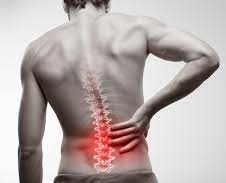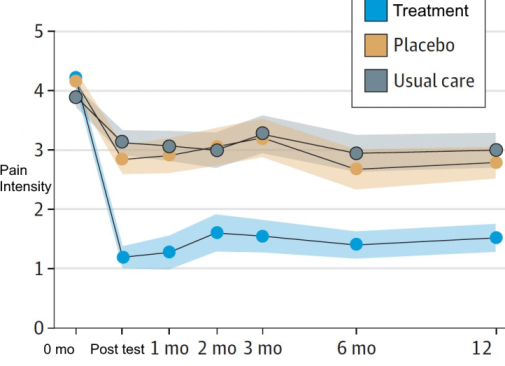Can we ‘train the brain’ to treat chronic low back pain?
October 19 2021
If you have been following me, you should be familiar with my writings on pain: In 2012, I wrote an article about my low back pain titled "A Revolution in the Understanding of Pain and Treatment of Chronic Pain" which was very popular in the fitness/strength & conditioning community. A year later, I wrote another article - What should fitness professionals understand about pain - further elaborating on these concepts. Ever since I wrote those articles, I was patiently waiting for a major study to actually show that this indeed works.
If you haven't read the articles, here is a very brief summary: In majority of chronic back pain conditions, the pain tissue/injury has healed, but the pain still lingers. Why? The pain is coming from your sensitized nervous system or brain. So the focus should be on lowering this hyper-sensitized nervous system or lowering the threat in your brain.
So what was the study design?
- Population: 151 individuals between 21 to 70 years with back pain for at least half the days of the last 6 months and with an pain intensity score of 4 of 10. And they had the pain for a mean duration of 10 years. So I would say people with moderate chronic pain.
- Intervention group: They were randomized to an intervention that involved treating chronic pain as a "brain-generated false alarm". The intervention shares some concepts used in modern pain science & cognitive behavioral therapy. The therapy involved 8 1-hour sessions twice weekly for 4 weeks. The treatment is about changing patients’ beliefs about the causes and threat value of pain.
- Comparison groups: The 2 groups were standard care (no treatment), and a placebo group which got a saline injection.
- Primary outcome: The primary outcome used a pain scale rating from 0 -10 measured after 1 month, and followed for a year.
What were the results?
The results were impressive to say the least, and are rarely seen in low back pain treatments.
- Pain reduction: The pain showed a large reduction in the treatment group compared to the placebo and usual care as shown in the graph here. Also these differences were maintained even after 1 year.
- Pain-free: 33 of 50 participants (or 66%) in the treatment group were pain-free or nearly pain-free (reporting a pain score of 0 or 1 of 10), compared with 10 of 51 participants (20%) randomized to placebo, and 5 of 50 participants (10%) randomized to usual care.
- Also, as expected, the reduction in pain was caused by changes in fearful pain beliefs/pain avoidance. Those with the largest reductions in beliefs that pain is equal to injury and those who started using the feared movements showed the most improvement. In short, these people turned down the threat or lowered their sensitivity.

What about previous studies?
A large study published in JAMA in 2018, used a similar model, but the results were negative. The difference could be due to the population (used people with acute back pain), intervention (just 2 hours of pain science education), and comparison group (used patient education than placebo injection). I do think the intervention was more extensive and tailored to the individual in this study.
How is the study quality?
I would rate it as a high-quality study!
- 1. Randomized and allocation was concealed
2. Drop-outs were similar between groups and used an intention-to-treat analysis.
3. No major protocol deviations
4. Outcome assessors were blinded, although not reported in the paper. (I checked with the author)
5. Statistical analysis plan and primary outcome were pre-registered
Any study limitations?
Maybe I am just being picky here or.. :
- Single-center: The study was done at a single center by experts trained in these very specific techniques. I am not implying anything, but a number of authors had disclosed financial COI's. I would like to see this replicated a larger sample size, multi-center study by other groups.
- Placebo group: The placebo group used injection. Would the results have been the same if the placebo got 6-8 hrs of attention from the pain therapist like in the intervention??
Which books do you recommend for the layperson?
Explain Pain: An excellent and easy read about the modern pain neuroscience written for people in chornic pain. The Way Out: This book is by the lead author, but I haven't read it.
Conclusion
This is a landmark study with some ground-breaking results that will change the way we look at pain forever.
If you know anyone with chronic back pain, send it to them please.
Reference 1
Reference 2






